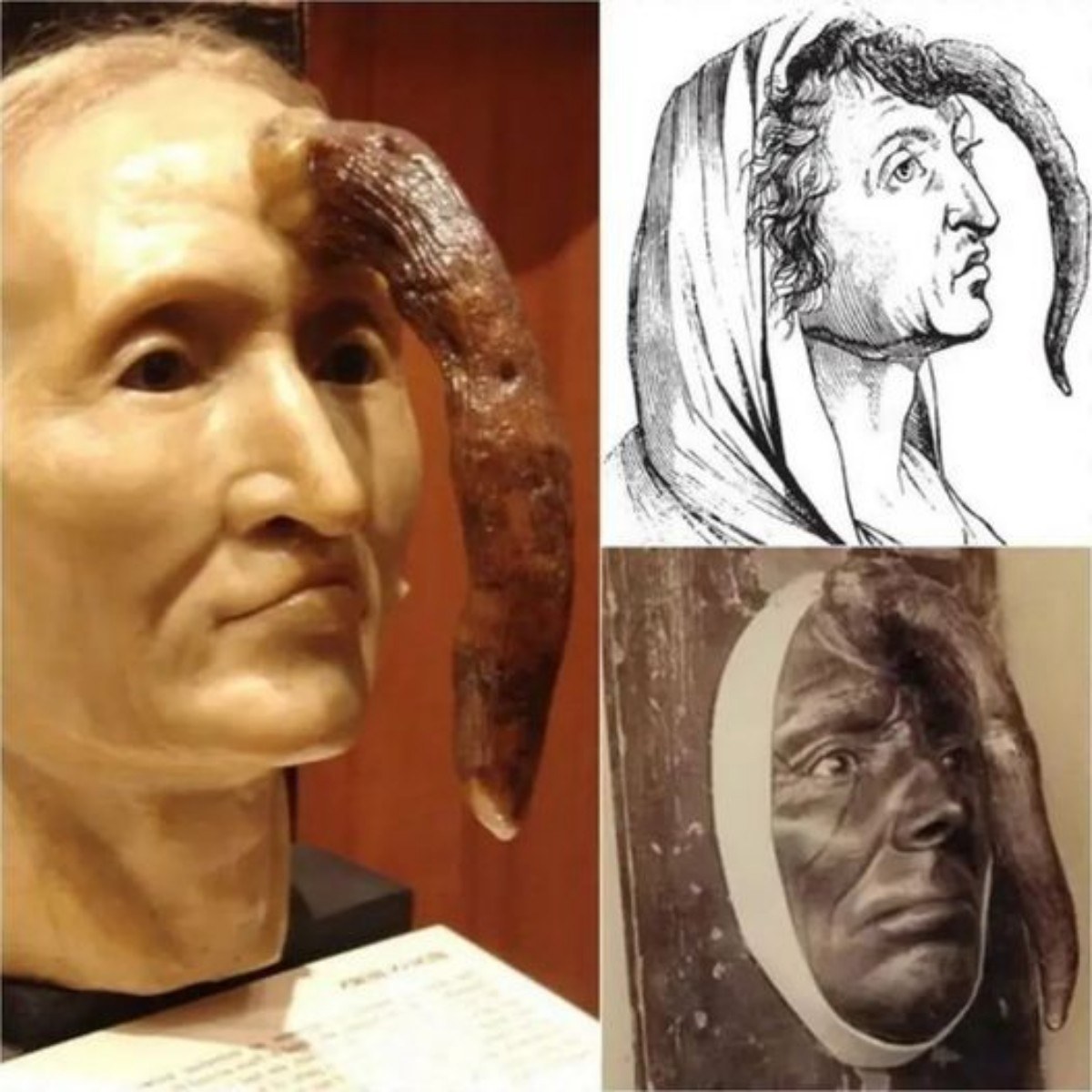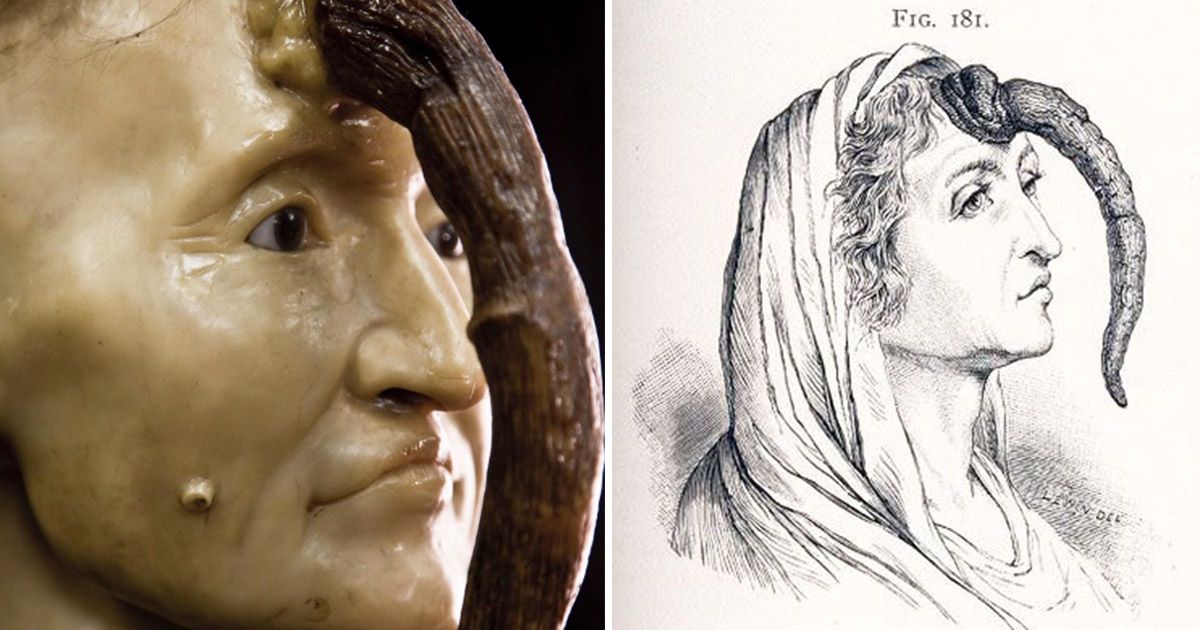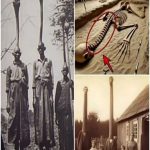A 19th-Century Oddity: The Woman with a Horned Forehead

The 19th century was a time of rapid scientific discovery, but it was also an age when curiosity cabinets, traveling circuses, and medical exhibitions turned human anomalies into public spectacles. Among the most striking cases recorded during this period was that of a woman whose forehead bore a horn-like growth. Her story, both strange and tragic, captures the essence of Victorian fascination with oddities—where the boundaries of science, superstition, and spectacle collided.

The Horn That Fascinated and Frightened
Accounts describe the woman as having a protrusion on her forehead resembling a horn. In medical terms, such growths are often identified as cutaneous horns, a condition where keratin—the same protein found in hair and nails—accumulates and hardens into horn-like structures. Though rare, cutaneous horns were documented in the medical literature of the time and often became subjects of intense curiosity.
For Victorian audiences, however, the medical explanation mattered less than the spectacle. To some, the horn was a mark of divine punishment or supernatural power; to others, it was an astonishing example of nature’s unpredictability. Showmen, doctors, and collectors all vied for the chance to exhibit such individuals, capitalizing on the public’s insatiable appetite for the bizarre.

Science Meets Spectacle
The case of the horned woman reflects how 19th-century society balanced scientific progress with sensationalism. Physicians studied her condition to better understand dermatological anomalies, while newspapers and penny dreadfuls sensationalized her appearance to sell stories. This duality—between scientific investigation and public entertainment—was central to the era’s obsession with human oddities.
Medical journals of the time often presented such cases with clinical detachment, yet the popular press turned them into legends. The woman herself likely endured both fascination and fear, treated as a living exhibit while also carrying the stigma of being “different.” Her existence highlights how the Victorian age was as much about spectacle as it was about science.
A Reflection of Victorian Culture

The horned woman’s story reveals more about the society that scrutinized her than about the anomaly itself. The Victorians were enthralled by the idea that the human body could defy natural expectations. Museums, fairs, and private collections displayed everything from preserved specimens to living people with rare conditions, marketed as “freaks of nature.”
Her story fits neatly into this cultural backdrop, serving as both a medical case study and a symbol of the blurred lines between science and superstition. In an age where Darwin’s theories were reshaping views of humanity, such anomalies reminded Victorians that the body itself could be a site of both wonder and fear.
Conclusion
The tale of the woman with a horned forehead endures as a haunting reminder of the 19th century’s fascination with oddities. While modern medicine identifies her condition as a rare keratinous growth, her legacy lies in the cultural impact she left behind—where human difference was magnified into mystery. Her story reflects not only the strangeness of her condition but also the Victorian obsession with the unfamiliar, the bizarre, and the extraordinary.











